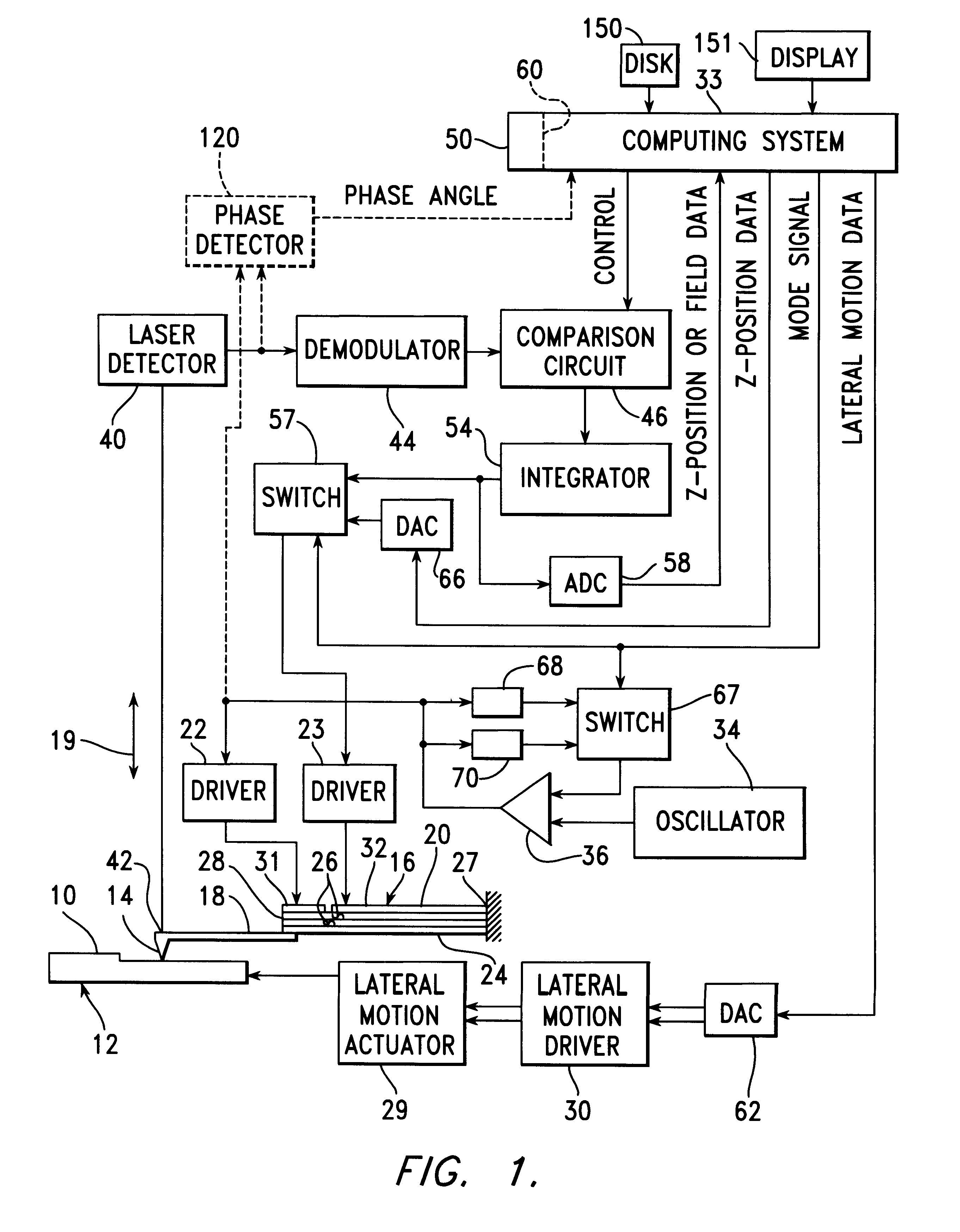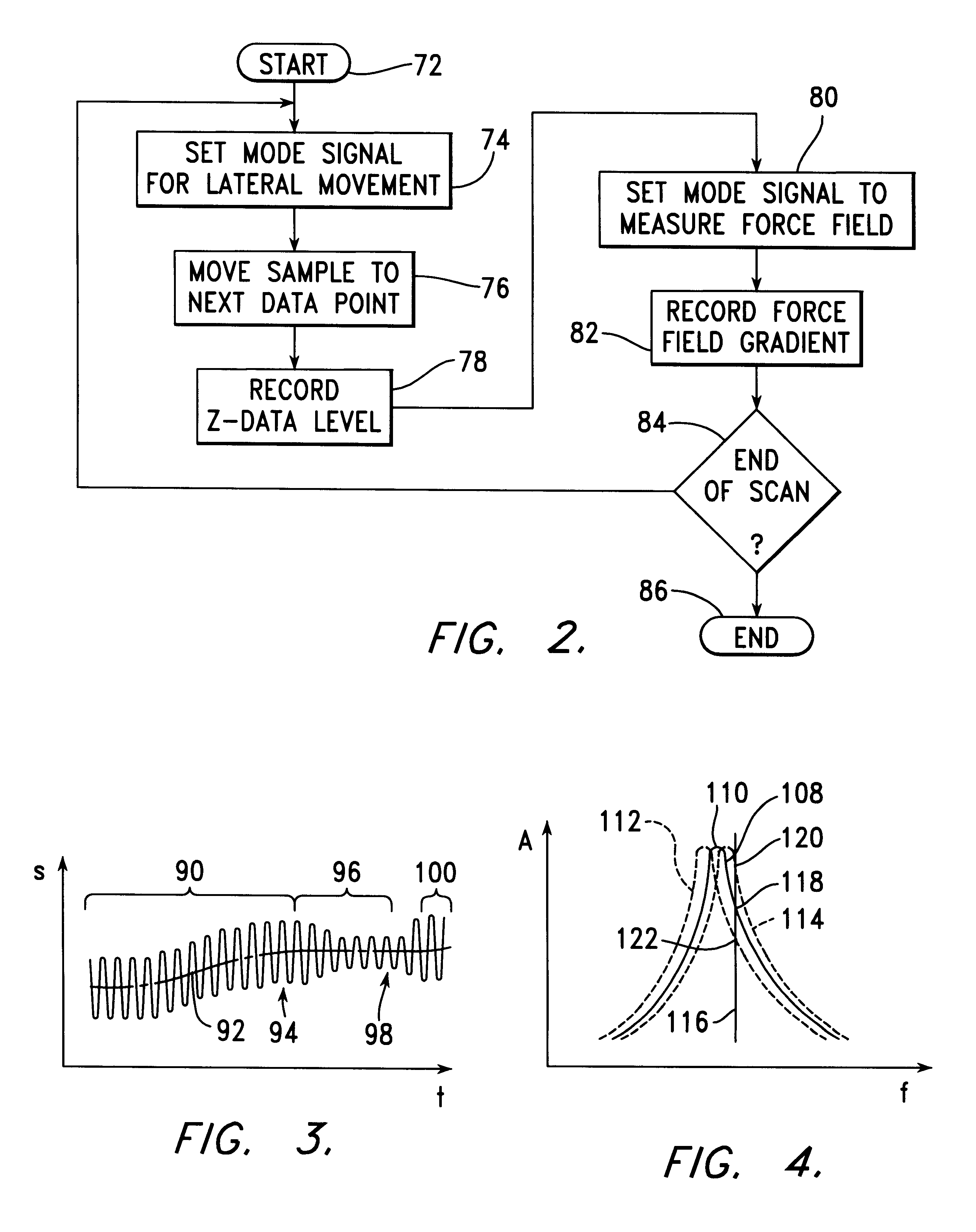Detecting fields with a single-pass, dual-amplitude-mode scanning force microscope
a scanning force microscope and scanning force technology, applied in the direction of mechanical measurement arrangements, mechanical roughness/irregularity measurements, instruments, etc., can solve the problem of not necessarily reflecting, second-harmonic oscillation of the cantilever, and the difficulty of measuring these quasi-static deflections in a manner providing an accurate depiction of the underlying electric or magnetic field
- Summary
- Abstract
- Description
- Claims
- Application Information
AI Technical Summary
Benefits of technology
Problems solved by technology
Method used
Image
Examples
Embodiment Construction
FIG. 1 is a schematic view of apparatus built in accordance with the present invention. In this apparatus, both the topographical characteristics of a surface 10 of a sample 12 and the magnetic field extending outward from the surface 10 are measured by means of a probe tip 14, which is attached to a bimorph piezoelectric actuator 16 through a cantilever 18. The probe tip 14 is moved into and out of engagement with the sample surface 10, in the directions of arrow 19, as voltage signals are applied to upper electrode 20 of the bimorph piezoelectric actuator by means of driver circuits 22, 23, with the lower electrode 24 thereof being maintained at electrical ground. The actuator 16 includes a pair of strips 26 of piezoelectric material extending between the electrodes 20, 24. The proximal end 27 of the actuator 16 is clamped, while the distal end 28 thereof is fastened to the cantilever 18. The sample 12 is moved in a pattern of lateral scanning motion parallel to the surface 10 by ...
PUM
| Property | Measurement | Unit |
|---|---|---|
| forces | aaaaa | aaaaa |
| displacement | aaaaa | aaaaa |
| resonant frequency | aaaaa | aaaaa |
Abstract
Description
Claims
Application Information
 Login to View More
Login to View More - R&D
- Intellectual Property
- Life Sciences
- Materials
- Tech Scout
- Unparalleled Data Quality
- Higher Quality Content
- 60% Fewer Hallucinations
Browse by: Latest US Patents, China's latest patents, Technical Efficacy Thesaurus, Application Domain, Technology Topic, Popular Technical Reports.
© 2025 PatSnap. All rights reserved.Legal|Privacy policy|Modern Slavery Act Transparency Statement|Sitemap|About US| Contact US: help@patsnap.com



